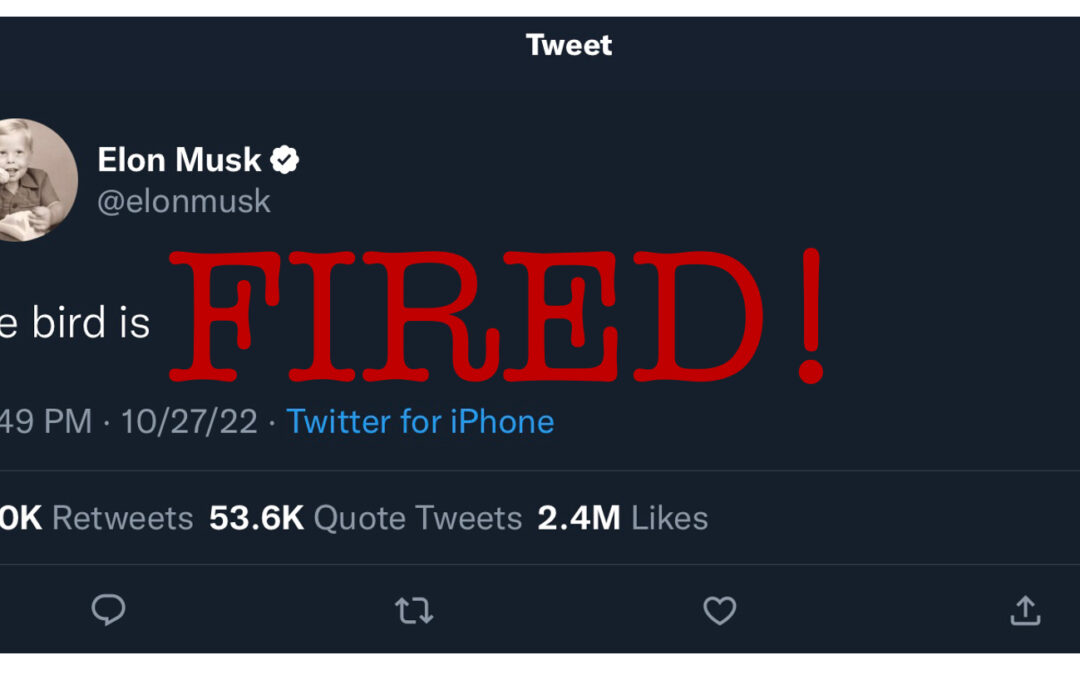I didn’t want to write about the Twitter takeover by Elon Musk.
In fact, I was hoping I’d never write about Musk at all.
Not here in my notebook.
Not in a news article.
Not ever.
Ok, maybe the occasional snarky remark, but besides that? No.
But here we are.
On November 4, Musk fired a huge number of his Twitter workforce because he spent too much money on a social media company that he decided he wanted to buy, then didn’t want to buy, then bought in the end for money than it was worth and now he claims he has to fix the fiscal mess that Twitter’s in.
This is why we can’t have nice things.
In the process, he fired the entire Accessibility Experience Team, announced by Accessibility Experience manager Gerard Cohen on Twitter at 1:30 p.m. EST.
This team, some of whom identify as disabled themselves and often engaged people from the disability communities in their work, is responsibility for all the features that makes it possible for those with a wide variety of different needs to find Twitter very usable. These needs come from an array of disabilities.
These features are everything from an easy ALT text for screen readers feature that was oft-promoted to dim mode for low visual acuity. Cohen said in his thread there were more projects in the work.
I’ve used many social media over the years and quit using most of them. I’ve also had a few web sites and worked with a few designers. I’ve worked with a number of content management systems (CMS) and I can say that I found Twitter’s accessibility tools extremely user friendly on the creator end — like adding ALT text — and on the user end, when viewing ALT text. And it’s not always that way. (I’m still catching up putting back in the ALT text, one of the many broken things, since the Great StacyKess.com Goes Kersplat Because of Incompetent Web Host of October 2022 — but that’s another story for another time.)
I am very concerned for the people of the Accessibility Experience Team, their work and for those of us on Twitter they welcomed with amazing user tools.
I don’t know what will happen to Twitter without an accessibility team. Will the existing tools break? Probably not outright. If and when they do break will they be repaired? Probably not. But will new accessibility tools roll out? No. Will disabled users feel a difference without support? Yes. Is this a major problem? Yes.
My hope for the people of the former Twitter Accessibility Experience Team is that they quickly land on their proverbial feet — that they find a place that supports them, their work and their mission. I hope they go on to create even better social media and web experiences for disabled users.
For the disability communities of Twitter, I am wish I had a positive outlook. Social media has been a major part of our organizing since, well, social media became a thing. It’s also how our communities, dispersed all over the world connect with each other. After all, about a quarter of all people — I’ve even heard up to a third — identify as disabled for a wide variety of reasons.
Without accessibility at Twitter being supported, certainly Twitter should not be the social media of choice for disabled communities.
Likewise, as human rights teams, curation teams, pubic policy teams and other teams supporting tools that assist and protect communities have been deeply cut or eliminated, I am beginning to wonder if what the future is of Twitter.
What I do know is it will be resigned to the history books of social media and content sites collecting dust.
Will we remember it with rose colored glasses like MySpace?
Or will we remember it as it going down in disgrace?
Or will it be, “Hey, whatever happened to Twitter?”
